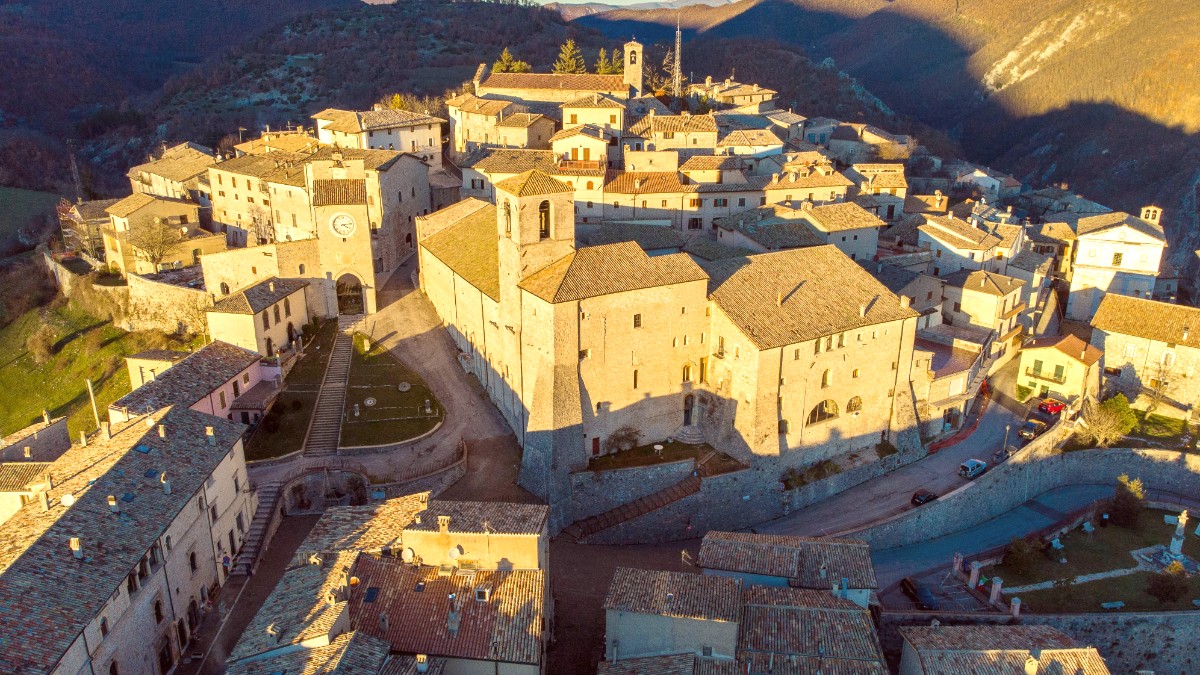
Umbria And Le Marche, Italy
Perugia’s most famous sites are concentrated in its historic center, each telling a piece of the city’s long and layered story.
These landmarks are central to understanding Perugia's past and present.
Explore smaller alleys off Corso Vannucci or near the University for Foreigners for other less-trafficked viewpoints.
Historic opera house and theater, a hub for performing arts in Perugia, hosting opera, ballet, and concerts.
Former church, converted into a modern auditorium for concerts and cultural events.
Check local listings (Perugia Tourism Office, websites) for temporary exhibitions, concerts, and festivals.
Adjacent to the cathedral, collection of religious artifacts, vestments, and artworks.
Smaller galleries throughout the historic center show contemporary local art and rotating exhibitions.
Perugia's history is deeply woven into its urban fabric, inviting exploration of its ancient and medieval layers.
Other smaller Etruscan wells and underground passages found throughout the city.
Extensive sections visible, often integrated into later medieval structures. Porta Marzia is inside Rocca Paolina.
Elaborate Etruscan burial chamber (3rd-2nd century BC), outside Perugia.
Perugia’s elegant main pedestrian street, lined with shops and cafes, prime for evening strolls.
A unique elevated walkway atop a Roman aqueduct, offers panoramic city views.
Medieval district outside city walls, retains much of its medieval character, with its own historic gate.
Cattedrale di San Lorenzo, Basilica di San Domenico (houses museum), Basilica di San Pietro (known for cloister and artworks), Oratorio di San Bernardino (15th-century, stunning polychrome façade).
Monumento ai Caduti (War Memorial) in Giardini Carducci. Various plaques and smaller monuments honor historical figures.
Rocca Paolina: Prominent military structure, a symbol of conflict and control. Perugina Chocolate Factory (outside city): "Casa del Cioccolato" museum and shop detail its history.
Beyond its historical core, Perugia has access to beautiful natural spaces and scenic vistas.
Giardini Carducci: Small public gardens with spectacular panoramic views over the Umbrian valley. Orto Botanico dell'Università di Perugia: Botanical garden with a diverse plant collection.
Porta Sole: Highest point in the historic center, incredible 360-degree views. Via dell'Acquedotto: Elevated walkway with unique views over rooftops. Views from outside the city: Driving through Umbrian hills has picturesque views of olive groves and vineyards.
Lake Trasimene (30 km west of Perugia): Italy's fourth-largest lake. Has designated beaches, boat trips to islands, water sports. River Tiber: Flows through Umbria, not typically used for tourist navigation near Perugia.
Umbria is not a safari destination. Wildlife viewing occurs naturally in regional parks and protected areas.
Find nature toursPerugia does not have prominent geological features. Wider Umbria has impressive caves and sinkholes, like Monte Cucco caves (about an hour's drive).
Explore geological toursBeyond the well-trodden path, Perugia holds secret delights waiting to be discovered.
Find local favorites and unique photo spots.
Organize your itinerary to account for travel time between sites and any specific opening hours.
Plan museum visits in advance, especially for the Galleria Nazionale dell'Umbria, to maximize your time.
Immerse yourself in Perugia's deep history by visiting its ancient and medieval layers.
Balance your urban exploration with time in Perugia's surrounding natural beauty.
Look for Perugia's less famous, but equally captivating, sites for a connection with the city.
Make the most of your sightseeing in Perugia with these extra suggestions.
Perugia is hilly with cobblestone streets. Comfortable walking shoes are a must for exploring the city on foot.
Utilize the MiniMetro and local buses to navigate Perugia's different levels and areas, especially if you have mobility needs.
Visit the Perugia Tourist Information Office for maps, event schedules, and local advice.
Consider a guided walking tour to gain insight into Perugia's history and architecture.
Find walking toursCheck for combined tickets or city passes for multiple museums and attractions to save money.
Explore tickets & passesExperience the magical atmosphere of Perugia's historic center after dark when landmarks are beautifully lit.
Book private evening toursCheck for local festivals, concerts, or markets happening during your visit for unique experiences.
See local eventsDo not miss the panoramic spots like Giardini Carducci or Porta Sole for breathtaking vistas of the Umbrian landscape.
Find sightseeing toursTo make the most of your museum visits, plan ahead and choose sites that match your interests.
Perugia's historical sites connect you directly to centuries of its story.
Many of Perugia's attractions are within walking distance in the historic center.
Plan your route efficiently to save time and energy.
Perugia makes a great base for exploring the wider Umbria region. These nearby destinations add depth to your Italian experience.
Discover the spiritual and historical charm of Umbria's other famous hill towns.
Two more of Umbria's stunning towns, each with distinct character and rich history.
Italy's fourth-largest lake offers relaxation and outdoor activities just a short distance from Perugia.
Great for a leisurely day trip with various activities.
Explore Umbria's renowned crafts and wine production in these charming towns.
Both are a short drive from Perugia, perfect for half-day excursions.
Experience the rugged beauty and gastronomic delights of southeastern Umbria.
A longer but rewarding day trip for nature and food enthusiasts.
Booking a guided day trip can simplify logistics, especially for destinations further from Perugia or those without direct public transport.
Local guides can provide deep insights into the history, culture, and natural beauty of the Umbrian region.
Many tour operators offer themed day trips, focusing on wine, truffles, history, or specific towns.